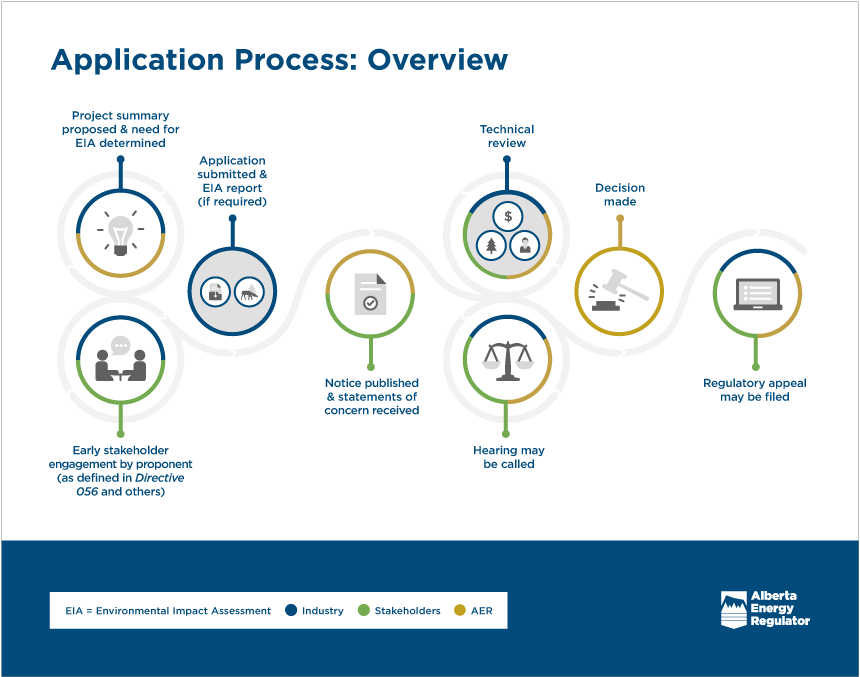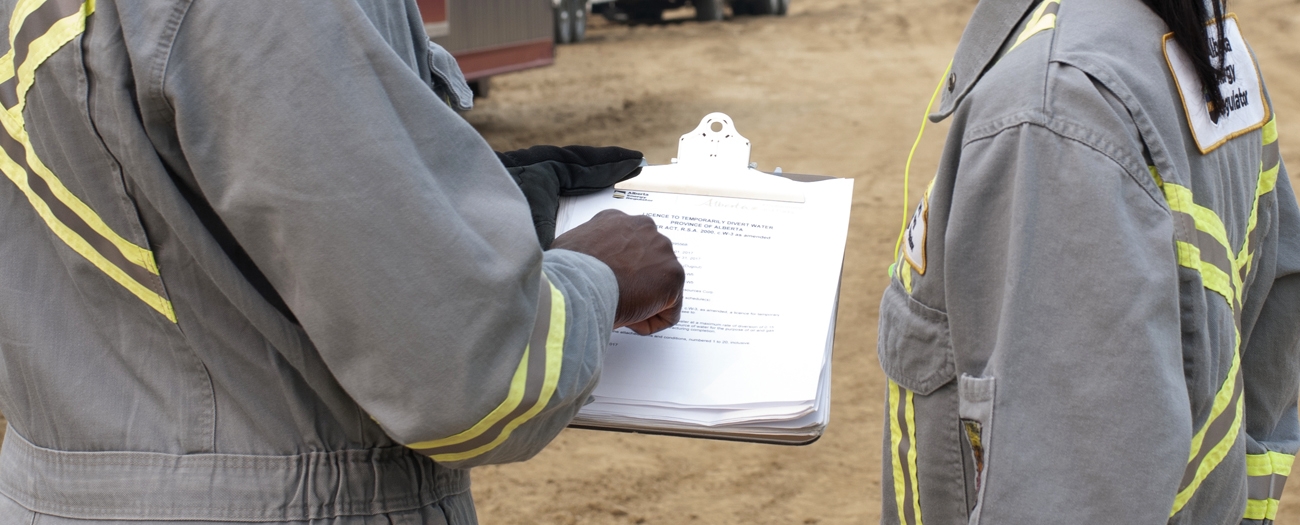More Info on Coal

Application Processes and Timelines
Depending on the type of application, our estimated processing time is three weeks to more than one year. For more information, see our spreadsheet for estimated processing times.
Review Process
Our team of technical experts is responsible for ensuring that every decision the AER makes is based on science and facts, and that each application follows all of our rules and requirements. This multidisciplinary team includes engineers, geologists, hydrologists, chemists, vegetation, wildlife, and aquatic biologists, economists, safety advisors, and land use specialists.
Our review process for all applications is as follows:
- We perform an initial review of the application and, if necessary information is missing, we will return it to the applicant without registering it. If the application is complete, we will register it and proceed to a full technical review.
- We share all registered applications on our Public Notice of Application page to encourage public participation in the decision process.
- We conduct a full technical review, which includes a thorough examination of all parts of the application, as they relate to the rules, regulations, and requirements that govern energy development.
- Anyone who believes they may be directly and adversely affected by an application can file a statement of concern (SOC). If we receive an SOC, it may take us longer to process the application.
- We may request additional information (through a supplemental information request) to complete our technical review.
- We will decide to approve, close, or deny the application. If we close it, the applicant may reapply without prejudice. If we deny it, the applicant can file an appeal through our appeal process.
- We will provide the applicant and any SOC filers with a copy of our decision via email and/or through one of our application systems, such as Integrated Application Registry and OneStop.
There are three distinct phases for coal development which require a company to submit applications to the AER: exploration, construction and operation, and closure. The AER reviews and make decisions on applications for each stage.
Under the Alberta Coal Conservation Act and Coal Conservation Rules, we divide applications related to coal mining into four categories:
- coal routine – changes to approved activities not expected to adversely and materially affect resource conservation, the environment, socioeconomic conditions, or stakeholders assessed in the original application.
- coal operational – routine changes to approved activities that may affect resource conservation or involve significant modifications but are not expected to affect stakeholders or alter the environment and socioeconomic conditions assessed in the original application.
- coal nonroutine – new activities or amendments to approved activities that may adversely and materially affect resource conservation, the environment, socioeconomic conditions, or stakeholders assessed in the original application.
- coal pilot/experimental – new activities or amendments to approved activities that support the testing and deployment of unproven technology.
The AER may consider technical changes requested as a notification/waiver when the changes do not adversely or materially change resource conservation, the environment, socioeconomic conditions, or stakeholders assessed within the original approval.
REDA and the Specified Enactment Jurisdiction Regulation (SEJR)give the AER the authority to administer parts of EPEA as it relates to coal project development.
Under EPEA, the AER issues approvals and reclamation certificates and reviews environmental impact assessments (EIAs).
- The EIA process allows the AER to examine the effects that a proposed project to construct, operate and reclaim a mine site may have on the environment and determine if the project is in the public interest.
- An approval issued under EPEA identifies the applicant's obligations and responsibilities for design, construction, operation, and reclamation of a coal mine or coal processing plant relative to air, water, land, and biodiversity.
- A reclamation certificate issued under EPEA asserts that all reclamation requirements have been met. Only companies with a reclamation certificate can close their projects and end their surface leases. Partial reclamation certificates can be issued for portions of a coal mine or coal processing plant to support progressive, timely reclamation.
REDA and SEJR gives the AER the authority to administer parts of the Public Lands Act as it relates to coal project development.
Under the PLA, the AER issues dispositions, authorizing the use of public land. Some of the major types of formal dispositions associated with coal development include the following:
- Mineral surface lease (MSL) for the mine site or a mine corridor (i.e., haul access road, conveyor, power line, etc.)
- Licence of occupation (LOC) for access roads, diversion structures, outfalls, intakes, and ponds
- Miscellaneous lease (MLL) for storage sites
- A coal exploration program (CEP) is required for exploration activities on public land
Under REDA, the AER is responsible for reviewing Water Act applications and submissions related to Alberta's energy resource industry.
Under the Water Act, the AER reviews applications and submissions related to the development of energy resources. The AER ensures that companies use and manage water safely by:
- reviewing energy resource applications that relate to the Water Act;
- issuing water approvals for energy resource activities that occur in or near water bodies, including wetlands;
- issuing water licences and temporary diversion licences for energy resource operations that require water;
- requiring companies to have a licence before using surface water and groundwater; and
- allocating the amount of water companies can use.
Submit an Application
For guidance on how to submit an application for Coal development, refer to Manual 020: Coal Development.


